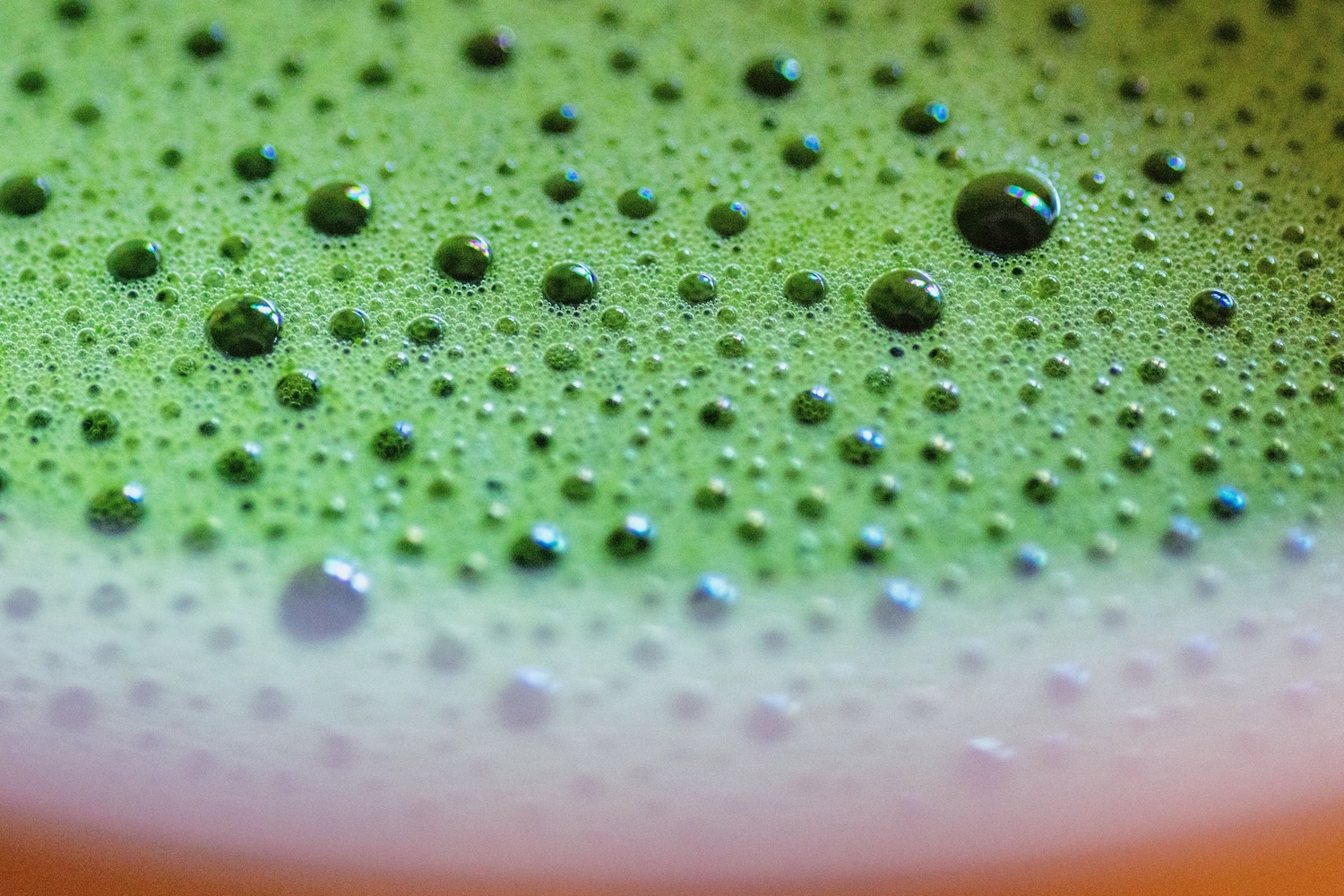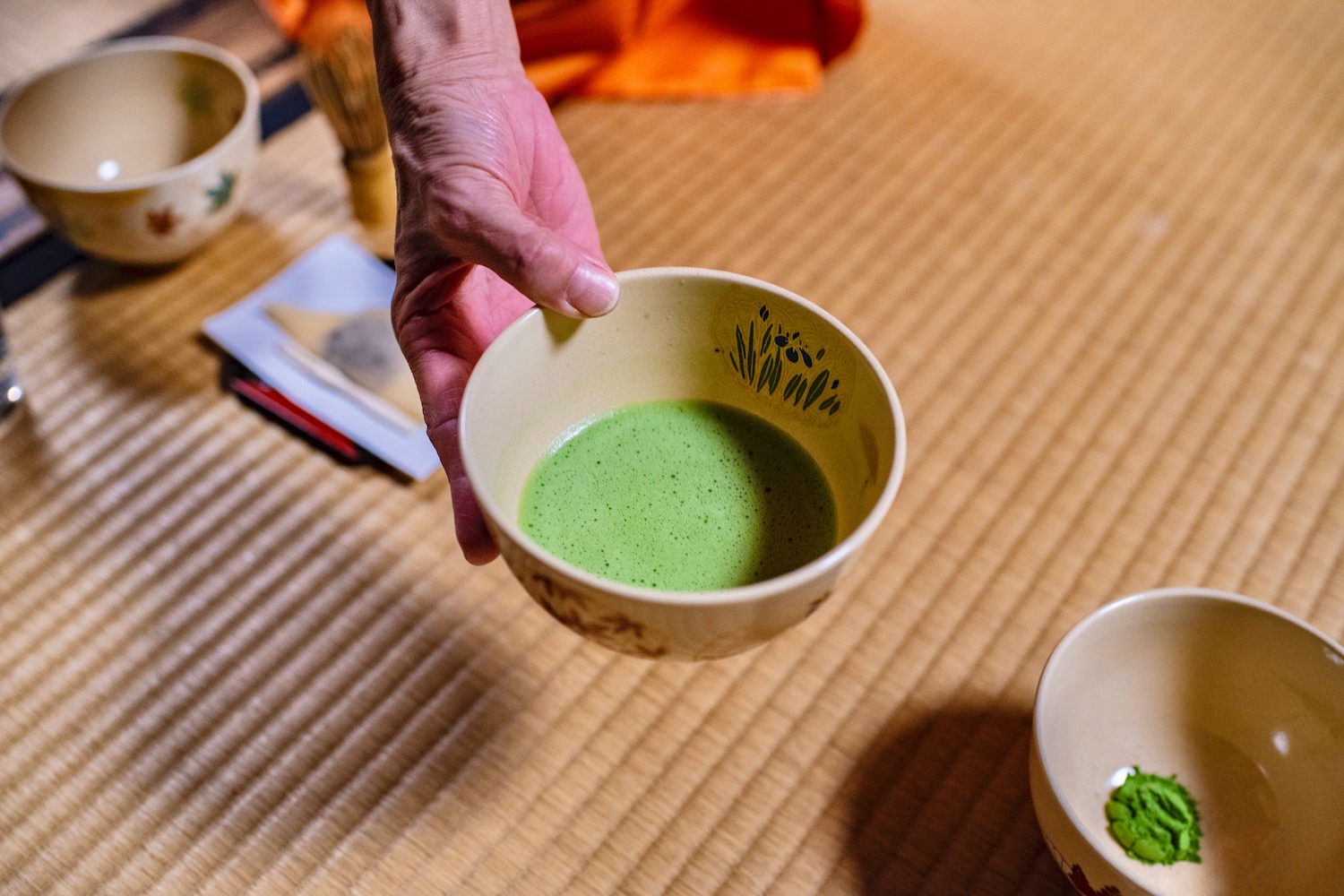A traditional tea ceremony (known in Japanese as sadō) was never high on my bucket list. I love tea and I love tradition but, well…meh.
Now, as you can imagine given that I’ve been traveling in the country for over a decade, I’ve attended several tea ceremonies, ranging from official and elaborate to gimmicky and tourist-focused. I’d be lying if I said I hadn’t enjoyed myself at all, though I also can’t claim they changed my life.
Now, if you want to see a tea ceremony in Japan, please don’t allow my low enthusiasm dim yourself. Instead, follow my practical advice—and disregard any shade I may throw while giving it.
My Tea Ceremony Story
While a tea ceremony in Kanazawa is usually not the first possibility that pops into most people’s heads, it’s how I inadvertently ended up experiencing this tradition for the first time. It was the autumn of 2015, just over a year after my first trip to Japan, and I’d stopped in the city for a whirlwind visit following a half-day trip to Shirakawa-go en route from Takayama. If that sounds like a lot, just imagine how it felt!
All of which is to say that when I walked past the small machiya just outside Kanazawa Castle, I was very much in need of some relaxation. What’s funny, looking back, is that I’m not even sure why the young woman invited me in. She neither asked for payment nor tried to sell me anything; the environment inside the old house seemed less than commercial. Ironically, this is how I wish most tea ceremonies went down (but few do).

The Best Places for Tea Ceremonies in Japan
Kyoto
As you can imagine, Kyoto is the place to be for a tea ceremony—well, at least if you’re a foreign visitor and are unlikely to receive an invitation to one. Some ceremonies are performed by Geisha, while at others, the matcha alone is the star of the show.
Tokyo
It’s not identical to a Kyoto tea ceremony, but enjoying sadō in modern Tokyo can still be a great experience. This is especially the case if you’re able to do so at a traditional cha-ya or tea house, such as the one at underrated Koishikawa Koraku-en garden.
Uji
It should come as no surprise the Uji is a hub for tea ceremonies, given that such a large percentage of Japan’s tea production occurs in the rolling, green fields just outside the city. Conveniently, many Uji tea ceremonies take place in locations between JR Uji Station and famous Byodo-in temple.
Kanazawa
Although Kanazawa isn’t usually near the top of people’s lists for a Japan tea ceremony, the reality is that some do occur here. You probably won’t get as lucky as me and happen into a private one, but whichever one you do find is likely to be much less crowded than those in Kyoto.
Sakata
Not every traveler will make it to Sakata, a port city in the Tohoku region located about halfway between Niigata and Akita. Still, if you do, attending a tea ceremony at the authentic Somaro Tea House is well worth the trek off Japan’s beaten path.

Other Tea Experiences in Japan
Love drinking tea but have no interest in a tea ceremony? Given my own past ambivalence, I can’t exactly argue with you. Here are some other ways to experience tea in Japan:
- Rent a car in Shizuoka and drive to Obuchi Sasaba tea plantation, which sits in the foothills of Mt. Fuji. Enjoy views of the famous mountain rising over the gorgeous tea fields.
- Instead visit a tea farm near Uji, such as d-matcha in Wazuka Town. Note that while the farm can offer transport from the station (for a fee), it’s best to have your own car.
- Visit any teahouse (cha-ya) within any traditional garden in Japan. These range from large ones inside popular gardens like Kanazawa‘s Kenroku-en, to smaller ones such as Suizenji Joju-en in Kumamoto.
TIP: Whether you want to see a tea ceremony in Japan, or need guidance in other areas of tip planning, I do hope you’ll consider commissioning a custom Japan itinerary.

Other FAQ About Seeing a Tea Ceremony in Japan
What are the rules of Japanese tea ceremonies?
The rules of Japanese tea ceremonies are irrelevant to visitors to Japan. If you attend a ceremony, you’ll have the rules explained to you, whether it’s a tourist-focused ceremony or an authentic one where outsides are welcome. Just listen and learn!
What do you wear to a tea ceremony?
You can wear any kind of clothing to a tea ceremony, though some people opt to wear kimono or yukata. Whatever you wear, make sure it’s something that will be comfortable while sitting on the floor, which is required during most tea ceremonies.
Is a Japanese tea ceremony worth it?
In my opinion, Japanese tea ceremonies are an inherently gimmicky/touristic experience that aren’t as interesting or enjoyable as I was ever lead to believe they would be. On the other hand, I do recommend enjoying one at least once. Who knows? You might love it!

The Bottom Line
Want to attend a tea ceremony in Japan? The good news is that you have more options than ever, from accessible and plentiful ones with Geisha in Kyoto, to more obscure ones in other parts of the country. I love the fact that different ceremonies cater to different tastes. Some people want to learn more about tea and how to serve it in the most beautiful way or to ensure the best flavor, while others are all about…well, the ceremony. No matter where you fall on this continuum, I do hope you’ll consider hiring me to plan your trip. It’s the best way to ensure every aspect of your travel is unforgettable.






